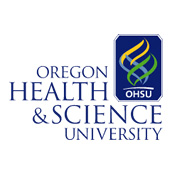Text Size:


Stroke
What is a Stroke?
A stroke happens when blood flow to the brain is interrupted, preventing oxygen and nutrients to the brain's cells. The cells are then damaged or begin to die. There are two major types of strokes:
- Ischemic stroke, the most common, is caused by blood clots or narrowing of blood vessels leading to the brain.
- Hemorrhagic stroke occurs when a broken blood vessel bleeds into the brain.
Who is at Risk?
High blood pressure, smoking, heart disease, and diabetes each increase the risk for stroke. By encouraging your loved ones to eat healthy meals, manage their blood pressure, exercise regularly, and if they smoke, to quit, you'll be helping them to prevent stroke.
Here Are Symptoms to Watch for
Warning signs for stroke may last a few minutes or a few hours. If your loved one experiences any of these symptoms, call 911 immediately. Every minute counts!
- Sudden numbness or weakness in the face, arm, or leg—especially if it's on one side of the body
- Sudden confusion or trouble talking or understanding
- Sudden vision loss in one or both eyes
- Sudden dizziness, loss of balance or coordination
- Sudden severe headache for no apparent reason
Recovery is a Process
The first three hours after symptoms first appear are extremely critical. Those that receive treatment during this time period are most likely to recover fully and more quickly. For others, the road to recovery can be both long and challenging. Sometimes it can take years. Stroke victims often suffer paralysis or weakness on one side of the body. They may have problems with thinking, awareness, attention, learning, judgment, speech, and/or depression. Sometimes victims of stroke express emotions that are inappropriate to the situation. Occupational, speech, and physical therapy can all work together to help victims regain their skills. In some cases, too much damage has been done to the brain cells to make recovery possible.
Sponsorship

Advertisement
